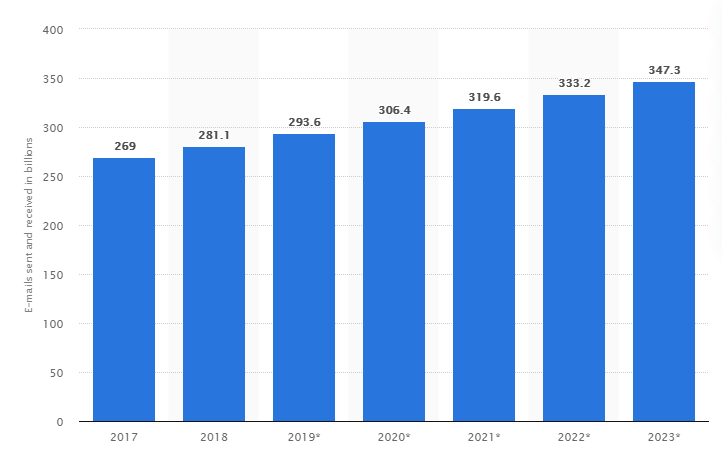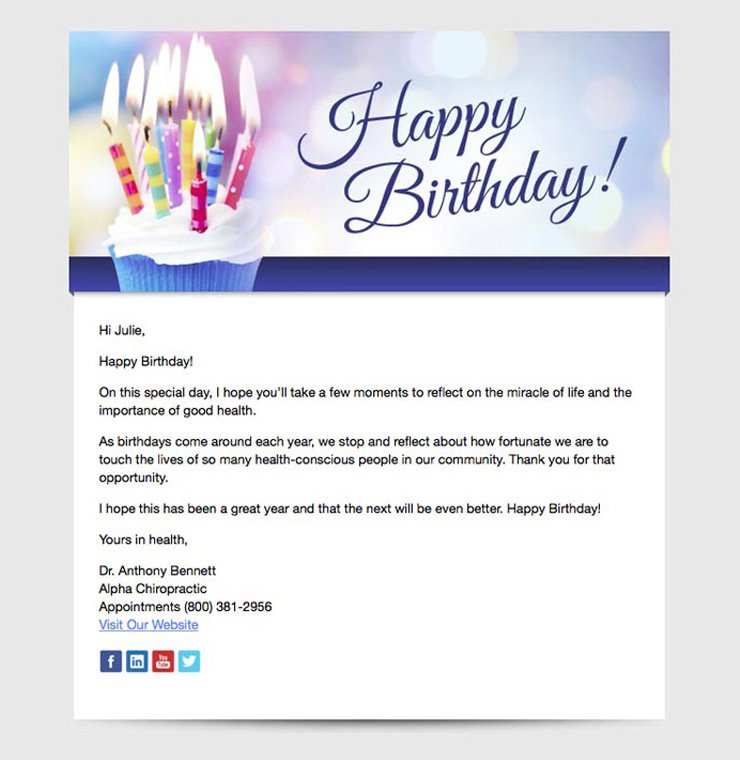How to Refresh Your Healthcare Email Marketing Strategy
How to Refresh Your Healthcare Email Marketing Strategy

Email is a marketing veteran, but some question its longevity. As SMS marketing, Social Media Marketing, and other marketing avenues connect with younger audiences, it begs the question: Does email marketing still work? Is healthcare email marketing still worthwhile?
The answer is an absolute yes. According to Statista, the number of emails sent and received every day is expected to grow to over 300 billion by 2022. Email is very much here to stay. In fact, email marketing’s return on investment averages $36 for every $1 spent- higher than any other channel.

Source: Statista
The numbers don’t lie, email marketing is here to stay, and will continue to evolve. For the healthcare industry, email communication is a low-cost, reliable way to obtain and onboard new patients, build brand trust, and continue engagement. Here’s a look at how you can fine-tune the basics of healthcare email marketing to become the most effective you can be.
Hyper-Personalization
“20% of retail, e-commerce, and consumer goods and services companies are personalizing emails based on gender, race, and ethnicity, versus 11% in 2019.” (Litmus, 2020)
Humanizing your healthcare brand sounds like a big feat, but is easily attainable through simple personal touches. As we already know, personalization increases brand loyalty and recognition, which is why its popularity increased 9% from 2019 to 2020. When done effectively, personalization instantly helps your brand feel more relevant and noticeable.
Hearing your name would make you turn around on a crowded street, right? Seeing your name in an email subject line has the same effect whilst skimming through your inbox. Upgrading important email elements like this tailor the reader’s experience to them, and helps you stick out in the best way.
Painless Personalization Solutions:
-
- Craft relevant subject lines. Catchy is not effective if no one understands the purpose. Your open rates will increase when personalized subject lines are relevant to your audience.
- Personalized Call To Action or Postscript. Incorporate their name or personalize a postscript in your emails. Send them special promotions on holidays or their birthday.
- Tailored content. For onboarding or retention, tailoring your content based on collected demographics addresses the unique needs of your contacts. Like medication instructions, helpful tips and dietary plans, and online bill payments or receipts.
- Have a friendly reply-to email. A simple change from ‘noreply@’ to an inviting ‘hello@’ or ‘thanks@’ is a warm way to acknowledge your subscribers.

Automation
“More than 8 out of 10 people will open a welcome email, generating 4x as many opens and 10x as many clicks as other email types.” (GetResponse, 2020)
Autoresponder emails yield high open rates because they set expectations early with a subscriber. They can often address important health-related questions or deliver helpful appointment reminders to boost brand trust. Many email marketing software companies like Mailchimp, offer tools and analytics to help auto-focus and hyper-personalize without any backbreaking personal effort. If you are not automating email basics, you should. They are an effective way to track and maintain goal achievement.
In healthcare, email marketing is about strengthening trust and increasing positive interactions with patients. This relationship begins before the first visit, with appointment confirmations and reminders, and is elongated through further communication. At the end of the day, the main goal of healthcare email marketing is to remind patients that you care and of the expertise you provide.
Painless Automation Solutions:
- Goal-triggered response emails. Welcome emails, appointment confirmations, and after-visit emails are often the most important online interactions you have with patients. With automation services, you can set goals that trigger an automatic response to stay at the forefront of patients’ minds, and on top of your game.
- Educational emails. These emails help inform, guide, and provide continued contact. At the very minimum, an informational email should reach inboxes once a month. These can help promote organization events, programs, and success stories, and educate on serious health-related issues.
- Birthday or holiday emails. These are the easiest ways to remind patients and subscribers that you care. Just don’t forget to include a call to action.

Segmentation
“The most frustrating things about personalization are: recommending items that don’t match interests (34%), expired offers (24%), name misspelling (15%), inappropriate season or location offer (14%), already purchased promotions (13%).”
Segmenting your market allows you to target emails to the right subscribers. This is done by simply grouping contacts into smaller segments. The more information you accrue about your readers, the more you can effectively communicate with them, leading to higher click-through rates and conversions. Contacts can be grouped by geographics, engagement, purchase history, online behavior and interests, and so much more. These details allow marketers to curate relevant content, hyper-personalize, and automate on a more efficient level.
Segmenting your subscribers prevents unwanted emails or irrelevant information from entering the wrong inboxes. You wouldn’t need an email about dementia care to go to a young diabetic- they are too unrelated. Luckily, predictive segmentation and other ai tools are available through most email marketing software. Based on your specifications, demographic focus can be as narrow or broad as you’d like.
Painless Segmentation Solutions:
- Re-engagement emails. Auto-send surveys to improve user preferences, to check-in to appointments, or to remind. As the software becomes more attuned to preferences, your open rates will increase.
- Ask for a review. Not only are you encouraging engagement, but you’re strengthening your online reputation as well. Ask your existing patients to spread information about your services.

Email Marketing with Red Crow
Like most marketing practices, your email campaigns should constantly be calibrated. Much in email marketing has changed in the past few years, but the basics remain the same. As you continue to fine-tune your personalization, automation, and segmentation efforts, your healthcare email marketing campaign will flourish- take our word for it.
If you’re looking for marketing specialists who help you produce new business, contact us today!




This Post Has 0 Comments